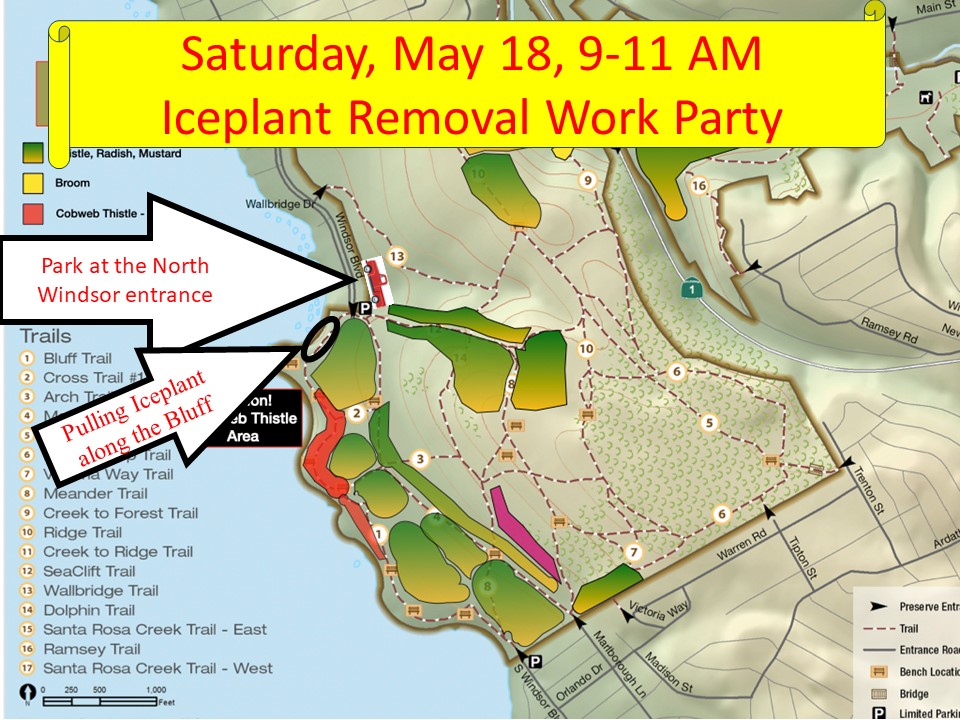2024.05.15 | The Ranch Is Scenic, But It Is Not a Garden

A mistaken view held by some is that Fiscalini Ranch Preserve, at least in part, should be a garden rather than what it is–a nature preserve. In doing so they advocate for managing the Ranch so there are always blooming flowers and removing any plants that could harm people or pets. Some go as far as disparaging native plants as weeds, when in fact many of the showiest plants on the Ranch are weedy non-native escapees from gardens. South African ice plant is a perfect example of this.
Friends of the Fiscalini Ranch Preserve has organized a workday to remove this invasive weed on Saturday, May 18, starting at 9 a.m. Meet at the North Windsor Bluff Trail entrance. The work area will be the first patch of South African ice plant growing along the Bluff Trail, about a quarter mile south of the North Windsor Bluff Trail entrance.
No experience is necessary, FFRP volunteers will show how it is done. Pulling South African ice plant is demanding work but done at an individual’s own pace in the spirit of collaboration, not competition. Every little bit helps. Wear sturdy shoes, work clothes, and bring a good pair of gloves. Michael Thomas will lead this community workday.
While Cambria Community Services District and FFRP do some vegetation management with visitors in mind by trying to minimize contact between poison oak and people on the busiest trails, for example, the overriding goal is to increase the preserve’s ecological value through expanding the forest and restoring native plants wherever possible.
This Saturday’s work party is an excellent example of our community’s continuing efforts to reduce the impact of South African ice plant on the bluffs. This invasive plant has spread along California’s coast in the many years since it was introduced through the misguided idea that it would be beneficial. If left unchecked on the Ranch, South African ice plant would spread from the bluff to the ridge in one unbroken mass of biologically impoverished vegetation.
While some might consider that possibility as visually attractive, it would be a food desert to local animals and exclude nearly all local plants. South African ice plant has its uses in a garden, but it adds little to coastal environments. No pollinators rely on it to raise their young. Rather than protecting bluffs from erosion, its heavy, water-laden leaves add an extra burden to fragile cliffs.
As Central Coastal California enters its dormant season, it may be helpful to remember that the climate is Mediterranean, characterized by cool, wet winters and hot, dry summers. While Cambria rarely gets hot, the summer months are dry with little to no rain. This natural cycle drives some plants to conserve their moisture by dropping their leaves, much like deciduous plants do during winter in colder climates. Although less visually appealing than leafy green plants in summer, these plants live with nature rather than fight against it.
Volunteers on Fiscalini Ranch Preserve will gather at 9 a.m. on Saturday, May 18, to work with local nature by removing invasive South African ice plant from our bluffs. Their work will make way for seaside daisy, seaside wooly sunflower, sea cliff buckwheat, and sea pinks, among other native plants that make the Ranch so special.

Article first published in https://cambriaca.org/


